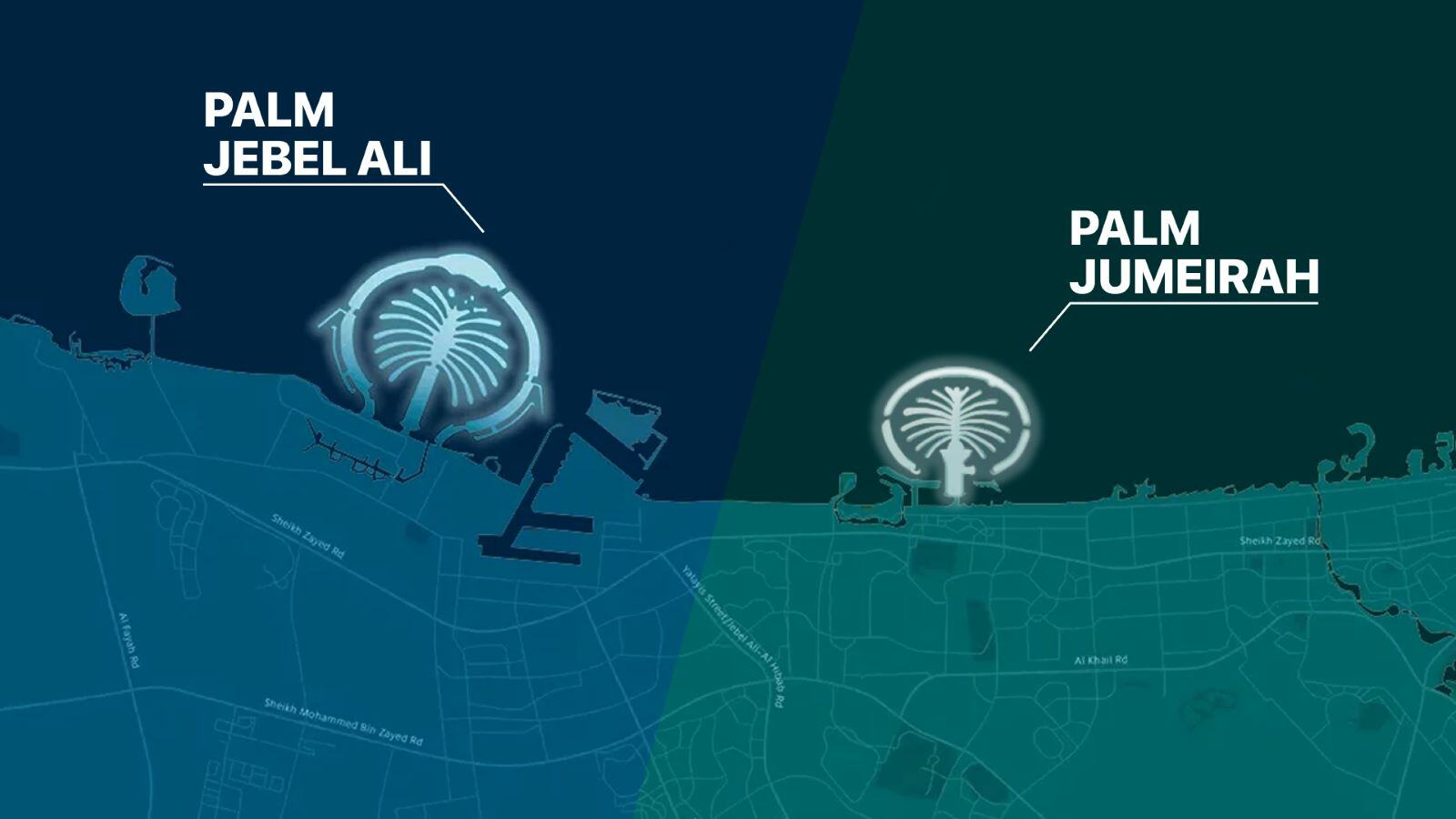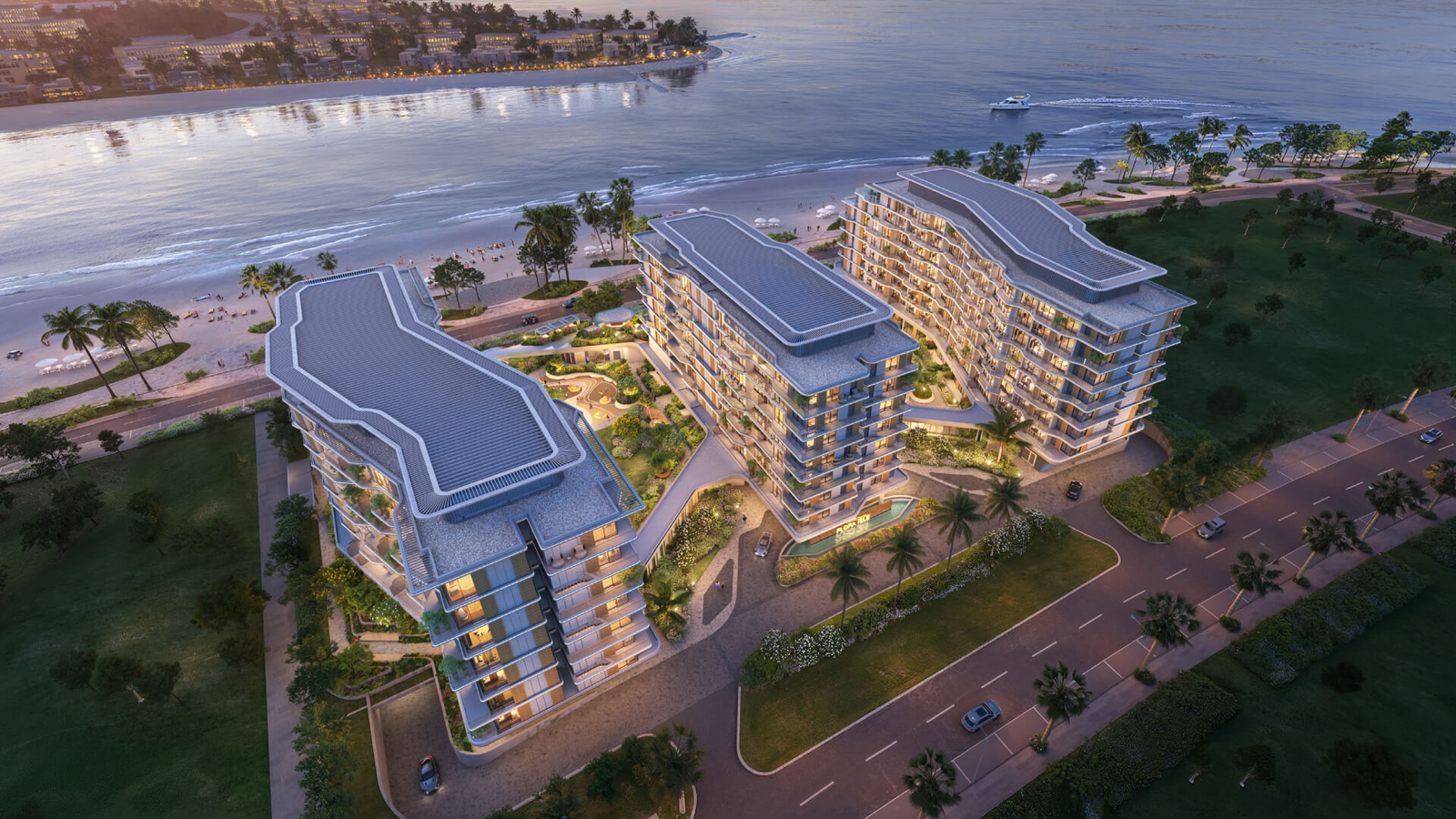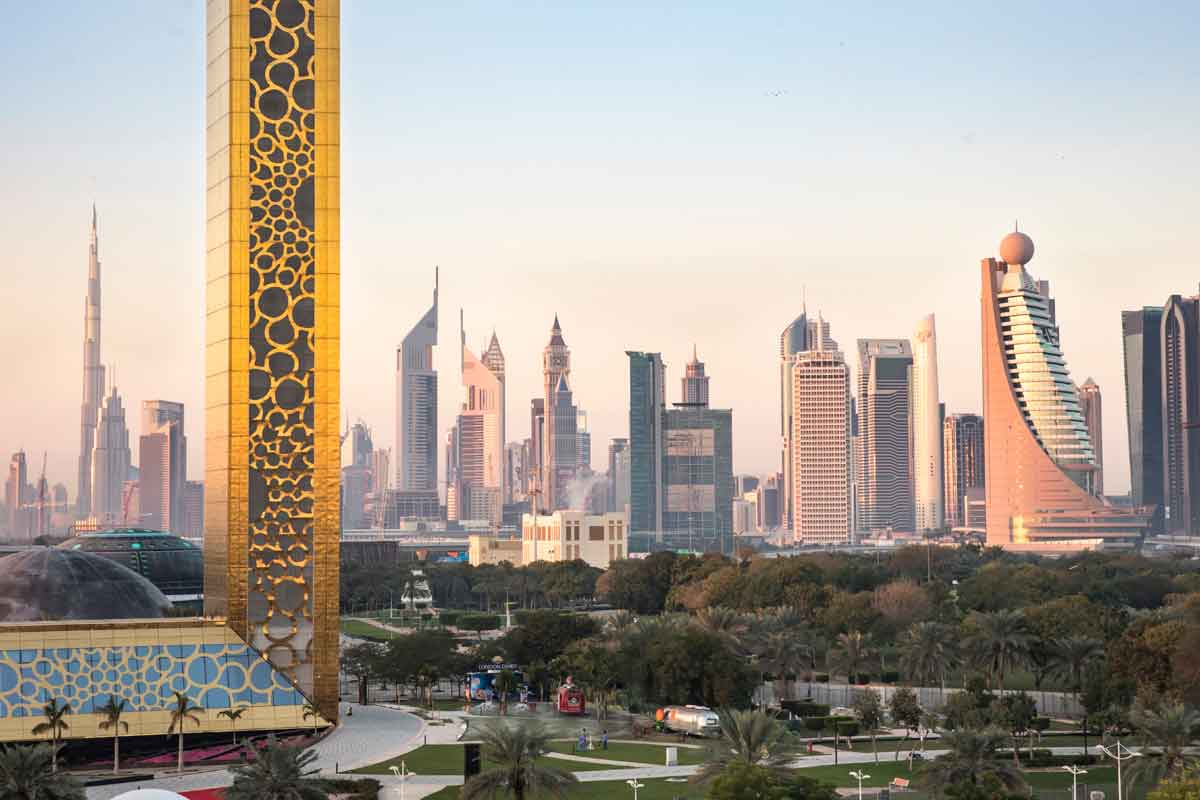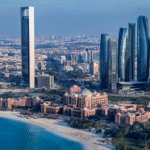Now Reading: Unlock Paradise: Jumeirah Islands vs Palm Jumeirah Showdown
-
01
Unlock Paradise: Jumeirah Islands vs Palm Jumeirah Showdown
Unlock Paradise: Jumeirah Islands vs Palm Jumeirah Showdown

Table of Contents
Imagine stepping out to your private garden, surrounded by tranquil lakes on Jumeirah Islands, or lounging by your Palm Jumeirah villa with the Arabian Gulf at your doorstep, knowing your investment is thriving in Dubai’s red-hot real estate market. In 2025, Dubai’s islands are a beacon for global investors, with 96,000 transactions worth $87 billion in the first half, 58% driven by buyers from the UK, India, Russia, and China.
Offering 100% freehold ownership, a dirham pegged to the U.S. dollar, and no personal income tax, capital gains tax, or annual property taxes, both Jumeirah Islands and Palm Jumeirah deliver 6-8% rental yields and 10-15% price appreciation, outpacing London (2-4%) or New York (2-3%). Properties over $545,000 qualify for a 10-year Golden Visa, while smaller units offer 2-year residency.
Residential purchases dodge 5% VAT, but transfer fees, maintenance costs, and corporate taxes for some buyers require careful navigation. This guide compares Jumeirah Islands and Palm Jumeirah, focusing on projects like Jumeirah Islands Villas and Atlantis The Royal Residences, to help you choose the best investment for lifestyle and returns in 2025.
Why Dubai’s Islands Are Investor Favorites
Jumeirah Islands and Palm Jumeirah, both 20-30 minutes from Dubai International Airport via Sheikh Zayed Road, offer luxury living with low 2-3% vacancy rates compared to 7-10% globally, fueled by 25 million tourists and a 4% population surge. Investors keep 100% of rental income ($80,000-$240,000 annually on a $2 million-$4 million property), versus $44,000-$144,000 elsewhere after taxes.
Zero capital gains tax saves $100,000-$280,000 on a $500,000-$1 million profit, and no annual property taxes save $20,000-$80,000 yearly, unlike London’s council tax (up to 2%) or New York’s property tax (1-2%). Jumeirah Islands offers serene lakefront villas, while Palm Jumeirah boasts iconic beachfront properties, each with distinct ROI profiles.
Investing here feels like choosing between two slices of paradise.
No Personal Income Tax: Rental Income Stays Yours
Neither island imposes personal income tax, letting you keep 100% of rental income, unlike the U.S. (up to 37%) or UK (up to 45%). A $2 million Jumeirah Islands villa yielding $80,000-$120,000 annually saves $36,000-$48,000 compared to taxed markets. A $3 million Palm Jumeirah apartment yielding $90,000-$135,000 saves $40,500-$60,750.
Short-term rentals, boosted by tourists, require a DTCM license ($408-$816), with Palm Jumeirah gaining a 15-20% yield boost ($13,500-$27,000) due to its global fame, while Jumeirah Islands sees 10-15% ($8,000-$18,000) for its quieter appeal. Long-term leases need Ejari registration ($54-$136). Non-compliance risks fines up to $13,612, so proper licensing is crucial.
Tax-free rentals feel like a monthly gift to your wealth.
Zero Capital Gains Tax: Profit Without Penalties
Both islands offer zero capital gains tax, letting you pocket 100% of sale profits. Selling a $2 million Jumeirah Islands villa for $2.5 million after 25% appreciation yields a $500,000 tax-free profit, saving $100,000-$140,000 compared to London (20-28%) or New York (20-37%).
A $3 million Palm Jumeirah apartment sold for $3.75 million yields a $750,000 tax-free gain, saving $150,000-$210,000. Palm Jumeirah sees 10-15% annual price growth due to its iconic status, while Jumeirah Islands offers 8-12% due to its niche, high-net-worth appeal. A 4% Dubai Land Department (DLD) fee applies on resale ($80,000-$120,000), often split, but tax-free profits boost ROI.
Keeping every dirham feels like a financial victory lap.
No Annual Property Taxes: Lower Ownership Costs
Unlike global markets where annual property taxes cost $20,000-$80,000 on a $2 million-$4 million property, neither island imposes them, easing ownership costs. Maintenance fees differ: $15,000-$25,000 for Palm Jumeirah’s Atlantis The Royal Residences, reflecting premium amenities like private beaches, versus $10,000-$20,000 for Jumeirah Islands Villas with lush landscaping and lakefront facilities. A 5% municipality fee on rentals ($4,000-$12,000) applies, slightly higher on Palm Jumeirah due to its upscale offerings. These costs are lower than London’s council tax ($40,000-$80,000) or New York’s property tax, enhancing ROI for both islands.
No property taxes feel like a burden lifted from your investment.
VAT Rules: A Residential Investor’s Advantage
Residential purchases on both islands are VAT-exempt, saving $100,000-$200,000 on a $2 million-$4 million property, unlike commercial properties or the UK’s stamp duty (up to 12%, or $240,000-$480,000). Off-plan purchases, more common on Palm Jumeirah, may incur 5% VAT on developer fees ($20,000-$80,000), recoverable via Federal Tax Authority (FTA) registration ($500-$1,000).
Short-term rental operators must register for VAT if revenue exceeds $102,041, charging 5% but claiming credits on expenses like DTCM fees ($408-$816). A $2 million Jumeirah Islands villa yielding $80,000-$120,000 incurs $4,000-$6,000 in VAT but allows $1,000-$3,000 in credits. A $3 million Palm Jumeirah apartment yielding $90,000-$135,000 incurs $4,500-$6,750 but allows $1,000-$3,000 in credits. Non-compliance risks fines up to $13,612, so diligent records are key.
VAT exemptions feel like a friendly nod to your investment.
DLD Fees and Title Deeds: Securing Your Property
The 4% DLD fee, typically split, is a key cost: $80,000 for a $2 million Jumeirah Islands villa or $120,000 for a $3 million Palm Jumeirah apartment. Gift transfers to family or shareholders reduce DLD to 0.125%, saving $77,500-$116,250. For example, gifting a $3 million property cuts the DLD fee from $120,000 to $3,750. Title deed issuance costs $136-$272 and must be registered with the DLD.
Broker fees, typically 2% ($40,000-$60,000), may be waived for off-plan projects on Palm Jumeirah. Mortgage registration (0.25% of the loan, or $5,000 for a $2 million loan) and valuation fees ($680-$1,360) apply for financed deals. The 2025 Oqood system ensures escrow compliance for off-plan purchases, protecting your investment.
Title deeds feel like the key to your island dream.
Corporate Tax: A Consideration for Business Investors
The 9% corporate tax, introduced in 2023, applies to businesses with profits over $102,110. A company leasing a $2 million Jumeirah Islands villa yielding $80,000-$120,000 faces a 9% tax ($7,200-$10,800), reducing net income to $72,800-$109,200. A $3 million Palm Jumeirah apartment yielding $90,000-$135,000 incurs $8,100-$12,150 in tax.
Qualified Free Zone Person (QFZP) status in areas like Dubai Multi Commodities Centre (DMCC) avoids this, saving $20,400-$30,600, with setup costs of $2,000-$5,000. Small business relief waives corporate tax for revenues under $816,000 until December 31, 2026. Individual ownership avoids this tax, ideal for most investors.
Corporate tax feels like a hurdle you can leap with strategy.
New Tax Rules for 2025

The Domestic Minimum Top-up Tax (DMTT), effective January 1, 2025, imposes a 15% tax on multinationals with revenues over €750 million ($793 million). Individual investors and smaller entities are unaffected, and QFZP status avoids DMTT, saving $12,240-$36,000. Cabinet Decision No. 34 refines Qualifying Investment Fund (QIF) rules, exempting corporate tax if real estate income is below 10%. A QIF earning $1 million, with $200,000 from rentals, faces 9% tax ($14,400) on 80% ($160,000). A July 2025 policy allows corporate tax deductions on fair market value depreciation, saving $6,545-$9,000 annually for a $3 million property revalued at $3.75 million.
New rules feel like a strategic puzzle with big rewards.
Jumeirah Islands: Villas
Jumeirah Islands Villas by Nakheel, a cluster of 50 man-made islands surrounded by lakes, offer 4-5 bedroom villas ($2 million-$4 million) with 6-7% rental yields and 8-12% price growth. A $2 million villa yields $80,000-$120,000 tax-free, saving $36,000-$48,000. Selling for $2.4 million yields a $400,000 tax-free profit, saving $80,000-$112,000. No property taxes save $20,000-$40,000, and VAT exemption saves $100,000.
Transfer costs include a 4% DLD fee ($80,000), 2% broker fee ($40,000), and title deed issuance ($136-$272). Maintenance fees are $10,000-$20,000, with a 5% municipality fee ($4,000-$6,000). QFZP saves $20,400-$30,600. U.S. investors deduct depreciation ($36,364-$72,727), saving up to $24,545. Golden Visa eligibility and serene lakefront living attract high-net-worth tenants for long-term leases.
Jumeirah Islands feels like a peaceful, high-return retreat.
Palm Jumeirah: Atlantis The Royal Residences
Atlantis The Royal Residences by Kerzner ($2.5 million-$10 million) offer 6-8% rental yields and 10-15% price growth. A $2.5 million apartment yields $80,000-$120,000 tax-free, saving $36,000-$48,000. Selling for $3.125 million yields a $625,000 tax-free profit, saving $125,000-$175,000. No property taxes save $25,000-$50,000, and VAT exemption saves $125,000.
Transfer costs include a 4% DLD fee ($100,000), 2% broker fee ($50,000), and title deed issuance ($136-$272). Maintenance fees are $15,000-$25,000, with a 5% municipality fee ($4,000-$6,000). QFZP saves $20,400-$61,200. U.S. investors deduct depreciation ($45,454-$90,909), saving up to $24,000. Golden Visa eligibility and private beach access drive short-term rental demand.
Palm Jumeirah feels like a glamorous, high-yield paradise.
Comparing Jumeirah Islands and Palm Jumeirah
Rental Yields: Palm Jumeirah’s 6-8% yields edge out Jumeirah Islands’ 6-7% due to its global fame and tourist-driven short-term rentals. A $2 million Palm Jumeirah apartment yields $80,000-$120,000 versus $80,000-$100,000 for Jumeirah Islands, a $20,000 advantage.
Capital Appreciation: Palm Jumeirah’s 10-15% growth surpasses Jumeirah Islands’ 8-12% due to its iconic status and limited supply. A $2 million Palm Jumeirah property gains $200,000-$300,000 annually versus $160,000-$240,000 for Jumeirah Islands.
Costs: Palm Jumeirah’s higher maintenance fees ($15,000-$25,000 vs $10,000-$20,000) offset its yield advantage, while DLD fees ($80,000-$100,000) and VAT exemptions ($100,000-$125,000) are similar.
Lifestyle and Demand: Palm Jumeirah suits short-term rentals and luxury seekers with its beachfront allure, while Jumeirah Islands attracts families and professionals for long-term leases with its tranquil lakes.
ROI Verdict: Palm Jumeirah offers 8-10% ROI for short-term rental income and higher appreciation, while Jumeirah Islands delivers 7-9% ROI for stable, long-term returns and lower costs.
Choosing feels like picking between vibrant glamour and serene luxury.
Strategies to Maximize Returns
For individuals: First, hold properties personally to avoid corporate taxes, saving $20,400-$61,200. Second, negotiate DLD fee splits, saving $40,000-$60,000. Third, use gift transfers to reduce DLD to 0.125%, saving $77,500-$116,250. Fourth, recover 5% VAT on developer fees via FTA registration ($500-$1,000). Fifth, leverage double taxation treaties with 130+ countries, saving $36,000-$60,750 for UK or U.S. investors.
Sixth, U.S. investors deduct depreciation ($36,364-$90,909), saving up to $24,545. For corporates: Secure QFZP status, keep QIF income below 10%, and claim depreciation deductions. Hire property managers ($10,000-$25,000 annually) and tax professionals ($1,000-$3,000) to avoid fines up to $136,125. Focus on short-term rentals in Palm Jumeirah for higher yields.
These strategies feel like a roadmap to your wealth.
Risks to Watch in 2025
A projected oversupply of 182,000 units by 2026 may slow price growth, though both islands’ exclusivity mitigates this. Choose trusted developers like Nakheel or Kerzner and verify escrow compliance via the 2025 Oqood system. Non-compliance with VAT or DTCM rules risks fines up to $13,612, and corporate tax errors can cost $136,125. Indian investors must disclose properties in India’s Foreign Asset schedule to avoid $135,000 penalties. Currency fluctuations, like a 5% dirham shift, could impact returns for investors converting to pounds or rupees.
Why Jumeirah Islands and Palm Jumeirah Shine
Jumeirah Islands offers serene, family-friendly villas with 7-9% ROI, ideal for long-term stability. Palm Jumeirah delivers 8-10% ROI with tourist-driven yields and iconic appeal. Both provide tax-free profits, 6-8% yields, 8-15% growth, and Golden Visa perks. Choose Jumeirah Islands for tranquility or Palm Jumeirah for glamour, and navigate fees wisely to secure your investment in Dubai’s thriving 2025 market.






















